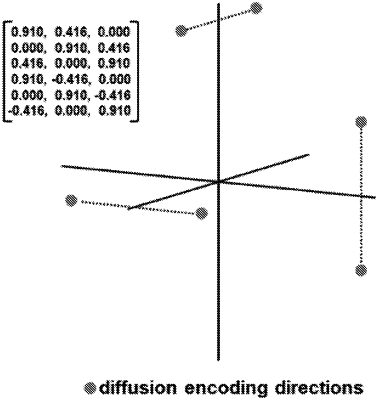| CPC G01R 33/56341 (2013.01) [G01R 33/5608 (2013.01); G06N 3/045 (2023.01); G06N 3/08 (2013.01)] | 23 Claims |

|
1. A method for generating a diffusion metric from magnetic resonance image data acquired from a subject, the method comprising:
(a) accessing magnetic resonance image data with a computer system,
wherein the magnetic resonance image data comprise:
a non-diffusion-weighted image acquired from a subject;
at least six diffusion-weighted images acquired from the subject,
each diffusion-weighted image corresponding to one of six different diffusion-encoding directions;
(b) accessing a neural network with the computer system, wherein the neural network has been trained on training data to learn a mapping from lower quality diffusion-weighted images to ground-truth diffusion-weighted images;
(c) inputting at least the at least six diffusion-weighted images contained in the magnetic resonance image data to the neural network using the computer system, generating output as residual image data that represents image differences relative to the ground-truth diffusion-weighted images;
(d) generating updated diffusion-weighted images by combining the at least six diffusion-weighted images and the residual image data with the computer system;
(e) generating a diffusion metric from the updated diffusion-weighted images using the computer system; and
(f) displaying images of the subject using the diffusion metric.
|